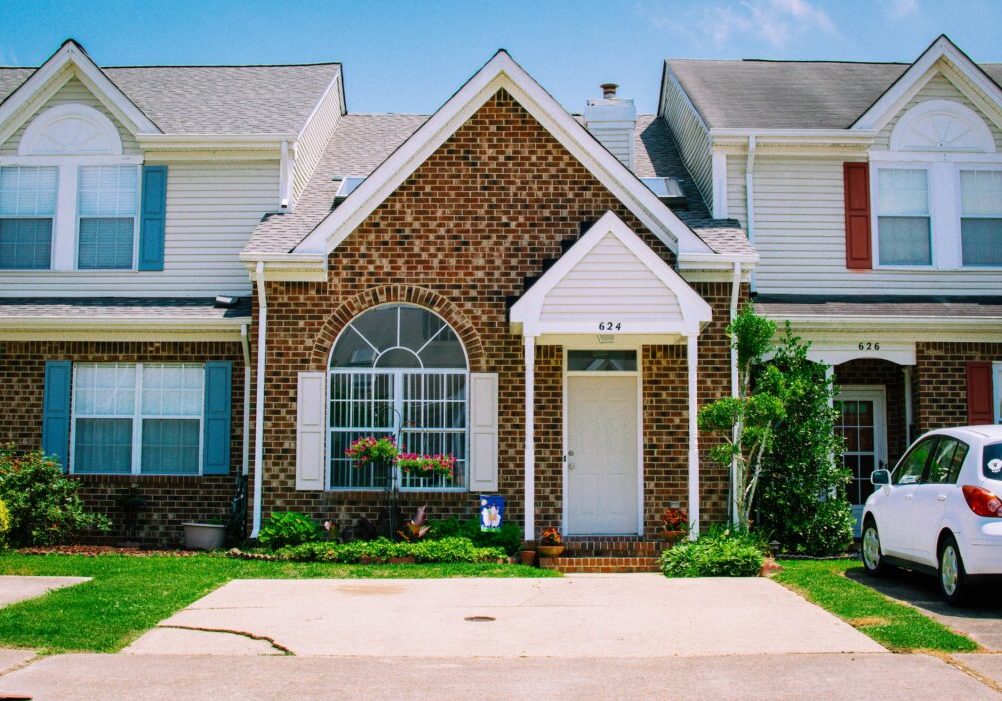The 10 Best Smart Home Companies in 2024
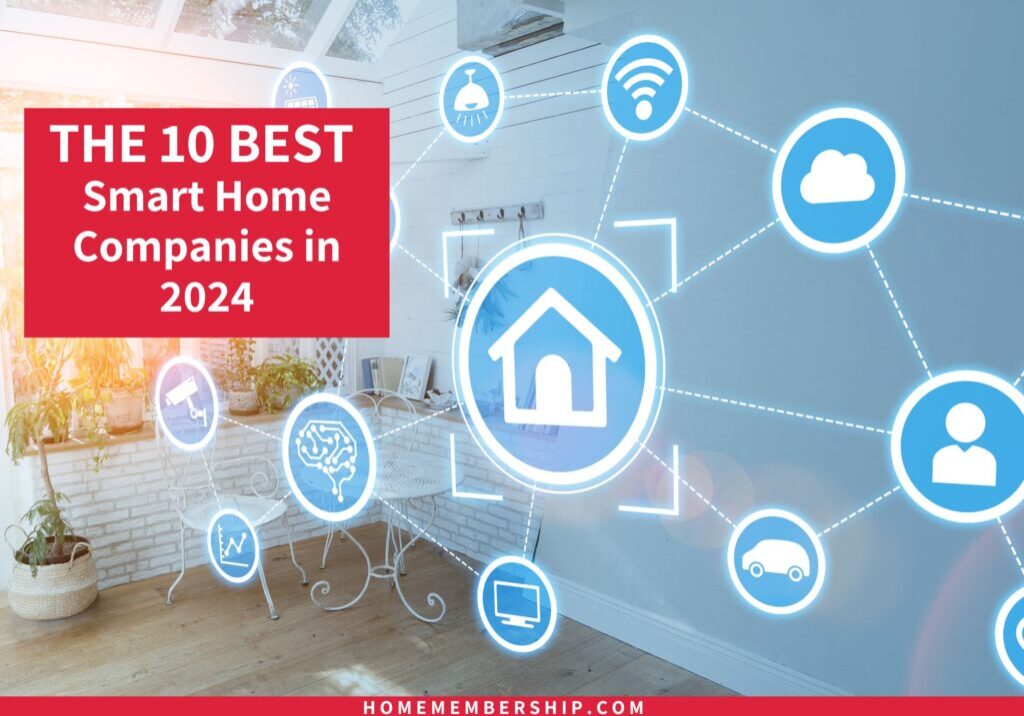
Our 2024 guide to the best Smart Home companies will help you make the right decisions to modernize your home.
What are Smart Home companies?
Smart home technology involves incorporating cutting-edge digital and electronic capabilities into different facets of a residence, facilitating automation, control, and monitoring through an interconnected network of devices and systems. These intelligent devices, including smart thermostats, home automation systems, security cameras, smart locks, and an array of other smart devices, form a comprehensive ecosystem linked by the Internet of Things (IoT).
Leveraging sensors, wireless communication, and advanced algorithms, residents can remotely manage tasks, utilize voice commands for home control, and receive real-time updates via mobile applications.
The overarching objective is to establish a responsive and interconnected living environment tailored to occupants’ preferences, fostering a home that is not only more energy-efficient and secure but also significantly more convenient. The landscape of smart home products encompasses a wide range of devices and technologies, from voice assistants and energy-efficient lighting control to next-level home automation solutions and integrated smart home hubs. This transformation extends beyond individual devices, encompassing entire home automation systems that cater to diverse needs and preferences.
This post contains affiliatel inks. All opinions are my own.
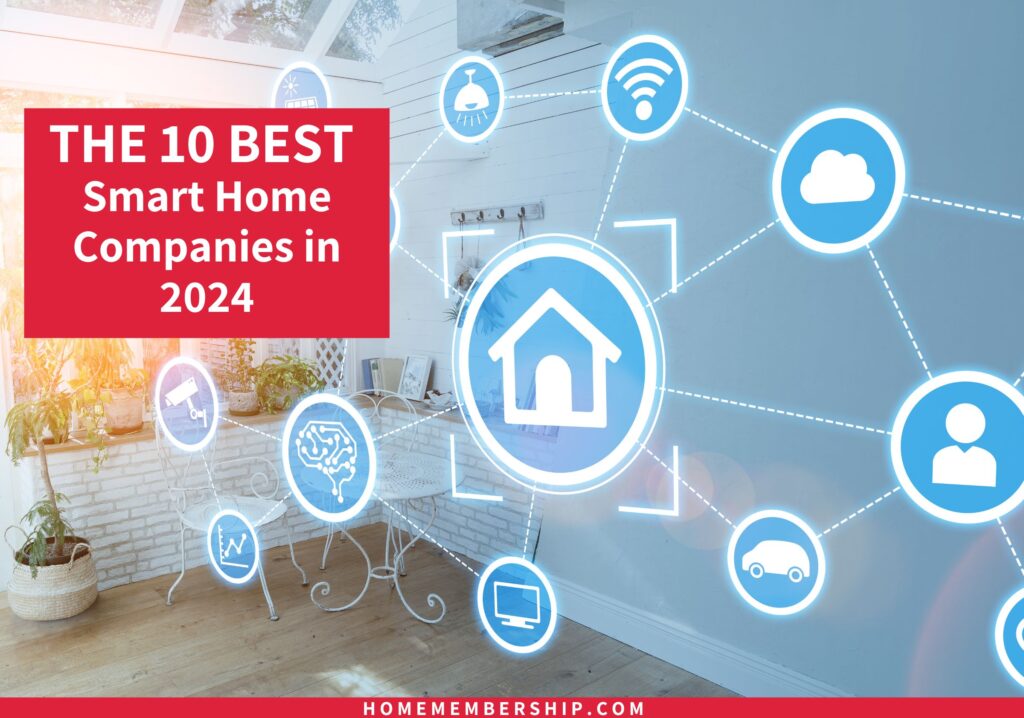
How long have Smart Home companies been around?
The concept of smart home devices dates back several decades, and while the technology has evolved significantly over time, some early examples include:
- X10 Protocol (1970s): One of the earliest instances of home automation, the X10 protocol allowed devices to communicate over power lines. It enabled basic remote control of appliances and lighting.
- ECHO IV (1966): Developed by Jim Sutherland, the ECHO IV was a voice-activated home automation system. It could control home appliances and many considered it groundbreaking for its time.
- Honeywell Kitchen Computer (1969): Although not a traditional smart home device, the Honeywell Kitchen Computer was an early attempt at integrating technology into homes. It was marketed as a kitchen appliance but was too expensive and impractical for widespread use.
- Clapper (1985): While a simple device, the Clapper allowed users to control lights and other devices by clapping. It was a rudimentary form of automation that gained popularity in the 1980s.
- Smart Thermostats (1987): Early programmable thermostats, such as the Honeywell Chronotherm, allowed users to schedule temperature changes. These devices laid the foundation for more advanced smart thermostats.
- Home Director (1991): Developed by IBM, the Home Director system allowed users to control lighting, security, and appliances using a central controller. It was a precursor to more sophisticated home automation systems.
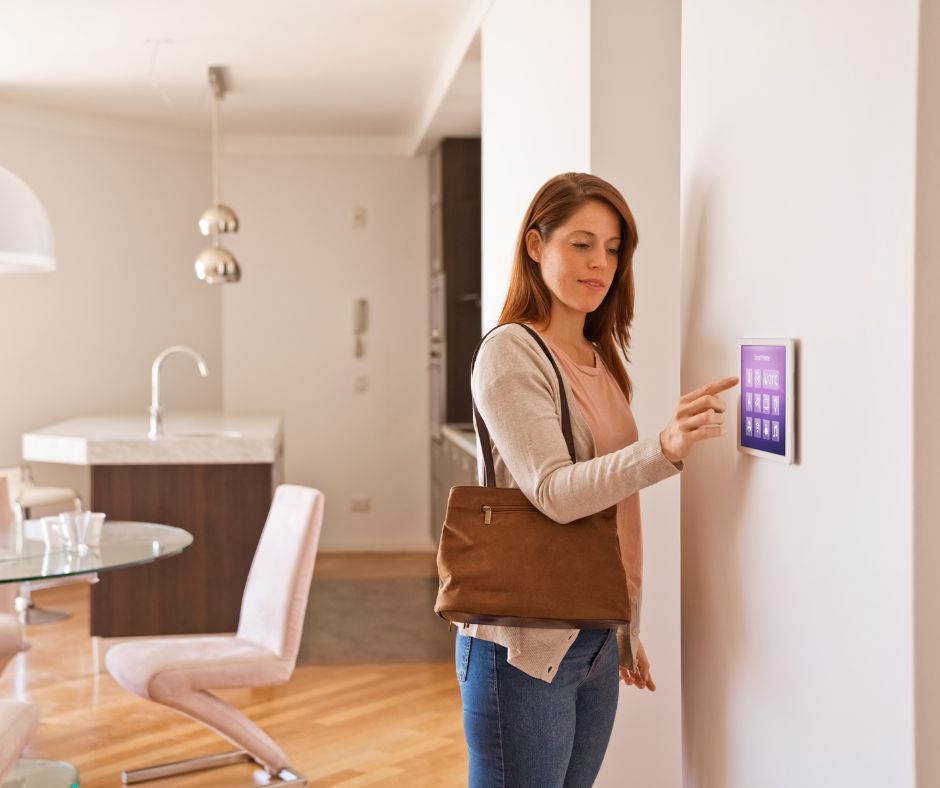
While these devices may not have had the level of connectivity and sophistication we associate with modern smart home technology, they represent the initial steps towards creating more automated and convenient home environments. The real explosion of smart home devices occurred in the 21st century with advancements in wireless technology, the Internet of Things (IoT), and voice control interfaces.
The Internet changed everything!
The first smart home devices to use the internet were primarily focusing on basic remote control and monitoring capabilities. In the 1990s, as the internet became more widely accessible, some early examples of internet-connected smart home devices emerged:
- Web-enabled Thermostats (1990s): The development of thermostats with internet connectivity allowed users to remotely adjust temperature settings using a web interface. These early versions laid the groundwork for more advanced smart thermostats.
- Internet-Connected Security Systems (Late 1990s): Security systems integrated with the internet allowed users to monitor their homes remotely. These systems typically featured cameras and sensors that could be accessed through a web browser.
- Early Home Automation Platforms (Late 1990s – Early 2000s): Companies like Home Director and Xanboo introduced early home automation platforms that utilized internet connectivity to control various devices in the home. These platforms allowed users to create simple automation sequences through a web interface.
- Web-Enabled Appliances (Early 2000s): Some appliances, such as refrigerators and ovens, began incorporating internet connectivity for basic tasks like checking inventory or preheating an oven remotely.
It’s important to note that while these devices were early examples of internet-connected smart home technology, they were often limited in functionality and lacked the seamless integration and widespread adoption seen in modern smart homes. The real proliferation of IoT-enabled smart home devices occurred in the mid to late 2000s and continued to grow with the advent of smartphones and more robust wireless technologies.
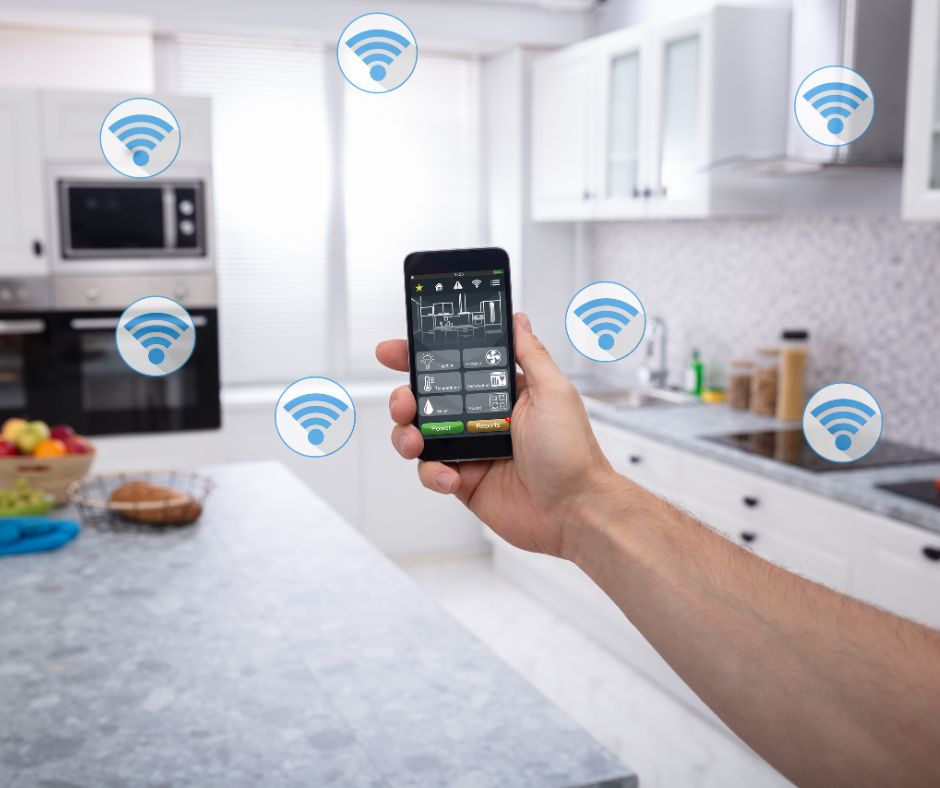
What are Smart Home companies doing now?
The development of the most modern smart home technologies represents a fascinating journey characterized by rapid advancements, integration of cutting-edge technologies, and a shift toward user-centric, interconnected living environments.
1. Rise of IoT and Connectivity (Late 2000s – Early 2010s):
The advent of the Internet of Things (IoT) played a pivotal role in transforming traditional homes into smart, interconnected spaces. Devices equipped with sensors and connectivity emerged, allowing seamless communication and control over the internet. This marked the foundation for the modern smart home ecosystem.
2. Voice Control Revolution (2014 Onwards):
The introduction of voice-controlled virtual assistants like Amazon’s Alexa, Google Assistant, and Apple’s Siri revolutionized user interaction with smart home devices. Users could now control an array of devices using natural language commands, making smart homes more accessible and intuitive.
3. Proliferation of Smart Speakers (2014 Onwards):
The widespread adoption of smart speakers, exemplified by products like Amazon Echo and Google Home, served as central hubs for smart home control. These devices not only provided voice control capabilities but also acted as gateways for managing a variety of interconnected devices.
4. Integration with Mobile Devices (2010s):
The ubiquity of smartphones allowed users to control and monitor their smart homes remotely. Mobile applications became central to the smart home experience, providing intuitive interfaces for managing devices, setting schedules, and receiving real-time alerts.
5. Advanced Security Solutions (2010s):
Smart home security systems evolved to include features such as facial recognition, geofencing, and AI-based threat detection. Video doorbells with two-way communication became commonplace, enhancing home security and user peace of mind.
6. Energy Efficiency and Sustainability (2010s):
Modern smart home technologies emphasize energy efficiency and sustainability. Smart thermostats, air conditioners, lighting systems, and appliances use AI algorithms to optimize energy usage, reducing environmental impact and lowering utility costs for homeowners.
7. Interoperability Standards (2010s Onwards):
Efforts to establish interoperability standards, such as the development of Matter (formerly Project Connected Home over IP), aim to create a unified protocol for smart home devices. This facilitates seamless communication and integration across different brands and devices.
8. Expansion of Smart Home Ecosystems (2020s):
The smart home ecosystem continues to expand with the inclusion of wearables, smart displays, and innovative gadgets. Wearable devices like smartwatches allow users to control their homes directly from their wrists, further enhancing convenience.
9. AI and Machine Learning Integration (2020s):
The integration of artificial intelligence (AI) and machine learning has enhanced the adaptability of smart home devices. Devices can learn user preferences, anticipate needs, and autonomously adjust settings, providing a personalized and proactive user experience.
10. Focus on Health and Wellness (2020s):
Recent trends in modern smart home technologies include a heightened focus on health and wellness. Smart devices, such as sleep trackers, air quality monitors, and fitness equipment, contribute to creating homes that prioritize the well-being of their occupants.
The ongoing development of modern smart home technologies reflects a dynamic landscape where innovation is driven by user needs, sustainability goals, and the seamless integration of advanced technologies. As smart homes continue to evolve, the emphasis remains on creating intelligent, adaptive, and user-friendly living spaces.
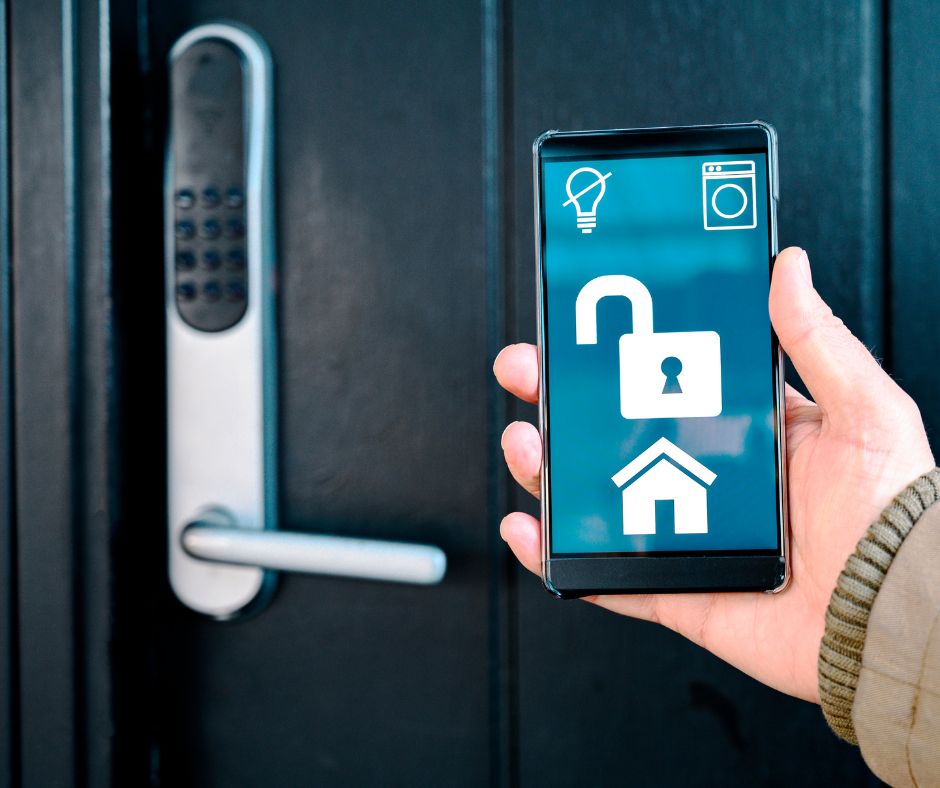
What do Smart Home companies make today?
There is a wide variety of smart home solutions available to today’s homeowner. Here is a list of the most sought-after types of smart home systems:
Smart Speakers:
Description: A smart speaker is a voice-activated device equipped with virtual assistants, allowing users to control other smart devices, play music, set reminders, and access information through voice commands.
Smart Thermostats:
Description: Smart thermostats enable users to remotely control and program their home heating and cooling systems. They often feature learning capabilities to optimize temperature control settings based on usage patterns.
Smart Lights:
Description: These systems consist of smart bulbs, switches, or fixtures that can be controlled remotely. Users can adjust brightness, color, and scheduling through a mobile app or voice commands.
Smart Security Cameras:
Description: Smart security cameras provide real-time video monitoring of homes. They often feature motion sensors, night vision, and the ability to store footage in the cloud, enhancing home security.
Smart Door Locks:
Description: Smart locks offer keyless entry and can be controlled via a mobile app. Some models integrate with other smart home devices, allowing homeowners to use their mobile device to monitor and grant access control remotely.
Smart Doorbells:
Description: Combining a doorbell with doorbell cameras and intercom system, smart doorbells enable users to see and communicate with visitors remotely via a mobile app, enhancing home security.
Smart Plugs:
Description: Smart plugs convert traditional appliances into smart devices by allowing users to remotely control their power supply. They are useful for scheduling, energy monitoring, and turning devices on/off.
Smart Thermostatic Radiator Valves:
Description: These devices replace traditional radiator valves, enabling individual control and scheduling of heating in different rooms. They contribute to energy efficiency by optimizing heating based on occupancy.
Smart Window Blinds:
Description: Smart blinds can be remotely controlled to adjust the amount of light entering a room. Some models can operate based on schedules, sensors, or voice commands.
Smart Smoke Detectors:
Description: Smart smoke detectors offer advanced features such as remote monitoring, smartphone alerts, and integration with other smart home devices. They enhance traditional smoke detection with modern connectivity.
Smart Home Hubs:
Description: Smart home hubs act as central control systems, allowing users to manage and automate various smart devices from different manufacturers through a single platform.
Smart Appliances:
Description: Appliances such as refrigerators, ovens, and washing machines equipped with smart technology can be controlled and monitored remotely. They often include features like energy optimization and notifications.
Smart Garage Door Openers:
Description: These devices enable remote monitoring and control of garage doors via a mobile app. Users can check the status of the door and open or close it from a distance.
Smart Water Leak Detectors:
Description: Smart water leak detectors use sensors to identify water leaks and send alerts to homeowners, helping prevent water damage by allowing for prompt intervention.
Smart Vacuum Cleaners:
Description: Robotic vacuum cleaners equipped with smart technology can be programmed, controlled, and monitored through a mobile app. They navigate spaces autonomously, providing automated cleaning solutions.
These types of smart home devices collectively contribute to creating a connected and intelligent living environment, offering convenience, energy efficiency, and enhanced security.

The Top 10 Smart Home Companies in 2024
From voice-controlled assistants to state-of-the-art security systems and energy-efficient solutions, these companies have played a pivotal role in shaping the smart home industry. Here’s our list of the top ten Smart Home companies on the market today, and the products that they offer:
Amazon:
Amazon is a multinational technology and e-commerce giant headquartered in Seattle, Washington. Founded by Jeff Bezos in 1994 as an online bookstore, Amazon has since diversified into a wide range of products and services, including e-books, streaming, cloud computing, and artificial intelligence. Renowned for its customer-centric approach and vast product selection, Amazon has become one of the world’s largest and most influential companies, shaping the landscape of online retail and technology.
Products: Echo devices (Alexa), Ring (doorbells, cameras), Blink (security cameras), smart home integration through Alexa.
Google:
Google is a multinational technology company renowned for its dominance in the internet-related services and products sector. Founded in 1998 by Larry Page and Sergey Brin, Google has become a leading force in search engines, online advertising, cloud computing, and mobile operating systems. Beyond its iconic search engine, Google’s diverse portfolio includes popular products such as Gmail, YouTube, and the Android operating system, contributing significantly to its status as a tech industry giant.
Products: Google Home, Nest (thermostats, cameras, doorbells), Google Assistant.
Apple:
Apple Inc. is a global technology company that stands as a pioneer in consumer electronics, software, and digital services. Founded by Steve Jobs, Steve Wozniak, and Ronald Wayne in 1976, Apple is renowned for its iconic products like the iPhone, iPad, MacBook, and Apple Watch. The company’s commitment to innovation, sleek design, and an integrated ecosystem has solidified its position as one of the most influential and valuable companies in the world.
Products: HomePod, HomeKit (smart home platform), integration with Siri.
Samsung:
Samsung is a South Korean multinational conglomerate known for its diverse range of businesses, including consumer electronics, smartphones, semiconductors, and home appliances. Established in 1938 by Lee Byung-chul, Samsung has grown into one of the world’s largest technology companies. Renowned for its innovation, Samsung has played a pivotal role in shaping the global electronics market with popular products like the Galaxy smartphones, QLED TVs, and semiconductor components.
Products: Samsung SmartThings (smart home hub), SmartThings-compatible devices, Smart TVs, and connected home appliances.
Philips:
Philips is a Dutch multinational conglomerate that operates in the fields of health technology, consumer electronics, and lighting. Established in 1891 by Gerard Philips and Frederik Philips, the company has a rich history of innovation and has been a leading player in the development of various technologies. Philips is well-known for its diverse range of products, including healthcare equipment, household appliances, and lighting solutions, showcasing its commitment to enhancing the well-being of individuals and societies worldwide.
Products: Philips Hue (smart lighting systems).
Ecobee:
Ecobee is a Canadian company specializing in smart home products, with a primary focus on smart thermostats. Founded in 2007 by Stuart Lombard, Ecobee has gained recognition for its innovative approach to energy efficiency and climate control in homes. The company’s smart thermostats, equipped with features like room sensors and voice control compatibility, have contributed to its reputation as a key player in the home automation industry.
Products: Ecobee smart thermostats with room sensors.
August Home:
August Home is an American smart home technology company renowned for its innovative solutions in smart locks and doorbell cameras. Founded in 2013 by Jason Johnson and Yves Béhar, August Home has been a pioneer in creating secure and convenient access to homes through its intelligent door locking systems. With a focus on user-friendly interfaces and integration with popular smart home platforms, August Home has become a notable player in the realm of connected home security.
Products: August Smart Locks, Doorbell Cams.
Ring:
Ring is a home security and smart home company best known for its video doorbell products that provide users with real-time surveillance and communication capabilities. Founded in 2013 by Jamie Siminoff, Ring has since expanded its product line to include security cameras, alarms, and smart lighting. Acquired by Amazon in 2018, Ring has become a major player in the smart home security market, offering comprehensive solutions for homeowners to monitor and secure their properties.
Products: Ring Video Doorbells, Ring Security Cameras (owned by Amazon).
Logitech:
Logitech is a Swiss-American manufacturer of computer peripherals and software, renowned for its diverse range of products including computer mice, keyboards, webcams, and audio devices. Founded in 1981 by Daniel Borel and Pierluigi Zappacosta, Logitech has established itself as a global leader in the personal computer accessories industry. The company is known for its commitment to innovation and ergonomic design, providing users with high-quality and user-friendly solutions for their computing needs.
Products: Logitech Harmony (smart home remote controls), Circle (security cameras).
Wyze:
Wyze is an American company recognized for producing affordable and feature-rich smart home devices, including security cameras, smart bulbs, and smart plugs. Established in 2017 by former Amazon employees, Wyze gained popularity for offering high-quality products at budget-friendly prices, making smart home technology accessible to a wider audience. The company’s commitment to innovation and affordability has positioned it as a notable player in the smart home market, with a range of products designed to enhance home automation for users on a budget.
Products: Affordable smart home devices including cameras, bulbs, sensors.

The Takeaway:
The smart home industry has witnessed remarkable growth, transforming the way we interact with our living spaces. From smart locks to energy management systems, the possibilities are vast. As the industry progresses, keeping an eye on major players, technological advancements, and investment trends will be crucial for anyone looking to embrace the next generation of home automation. The journey toward a fully connected and automated home has only just begun, and the possibilities are truly exciting.
Check out the Best Backyard Fire Pit Landscaping Ideas for 2024.


